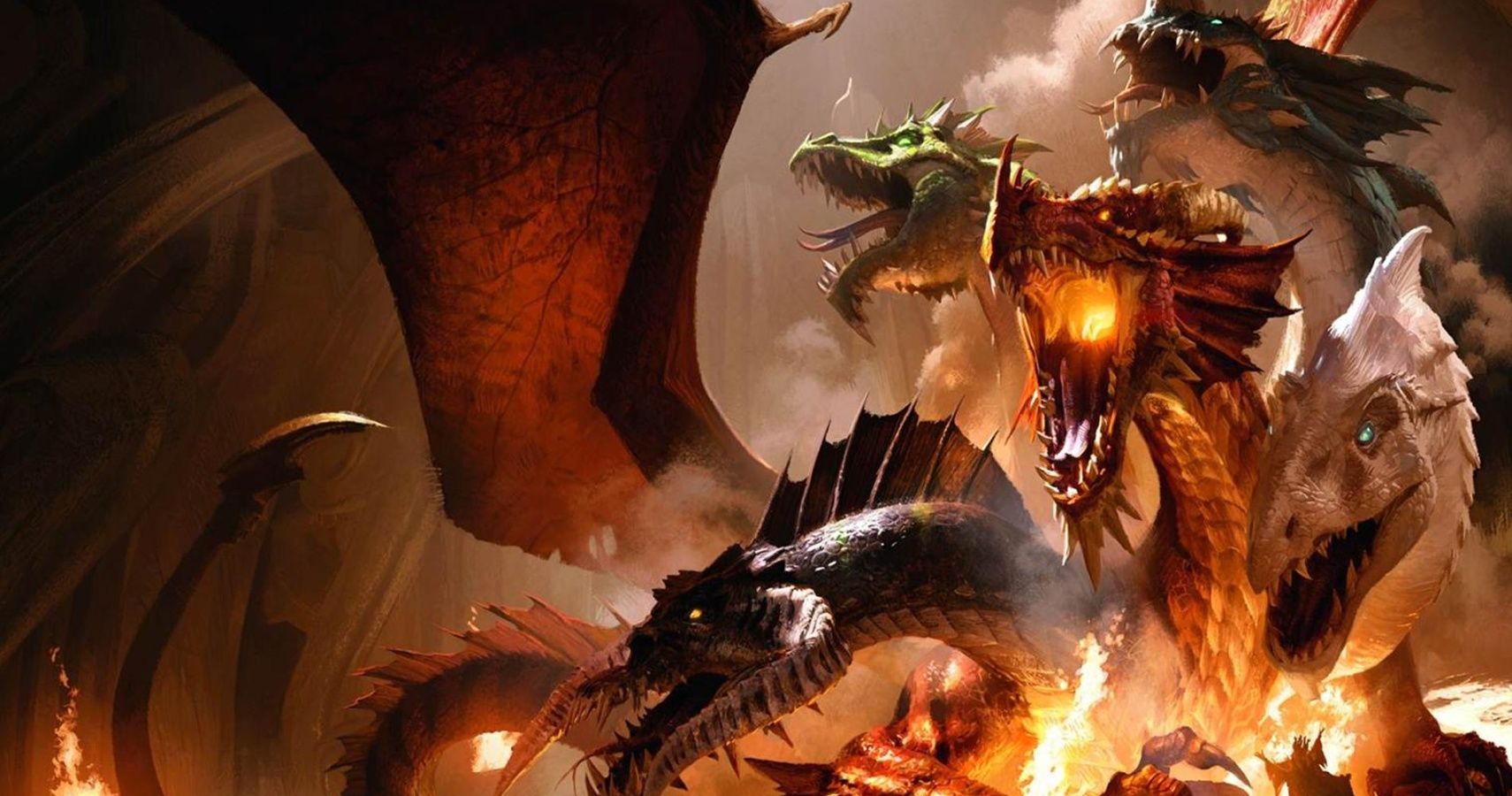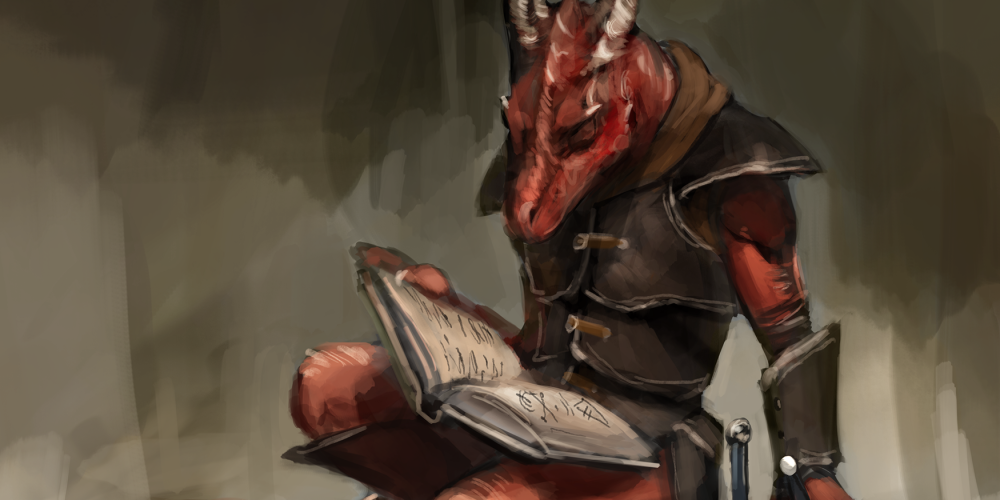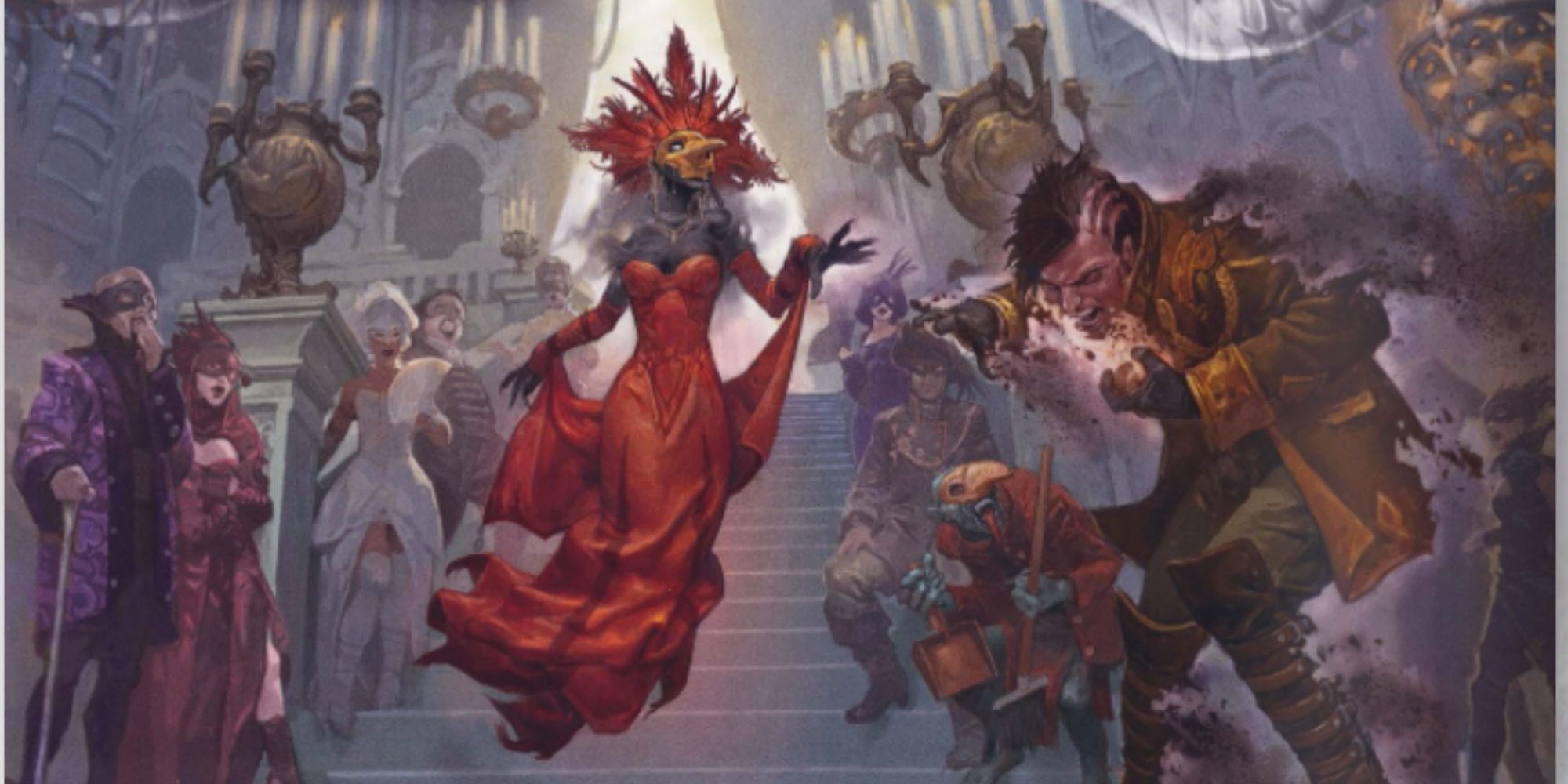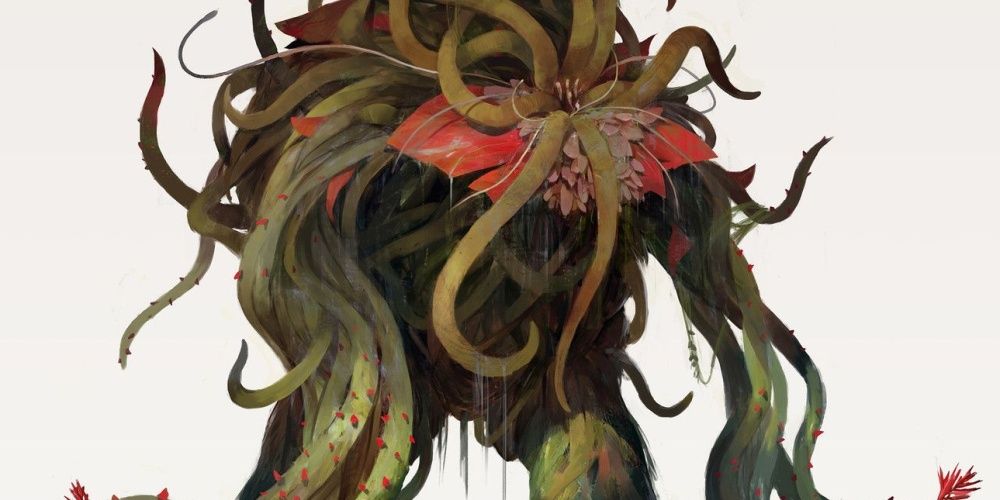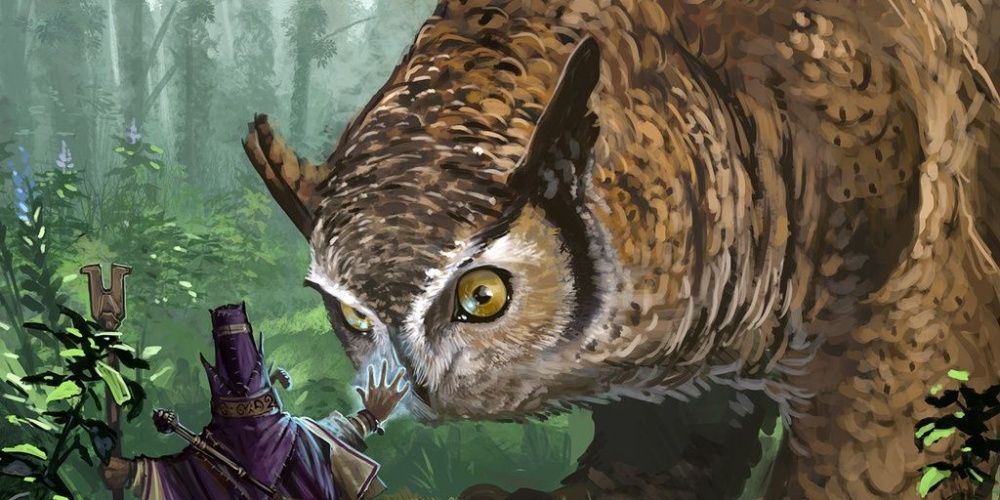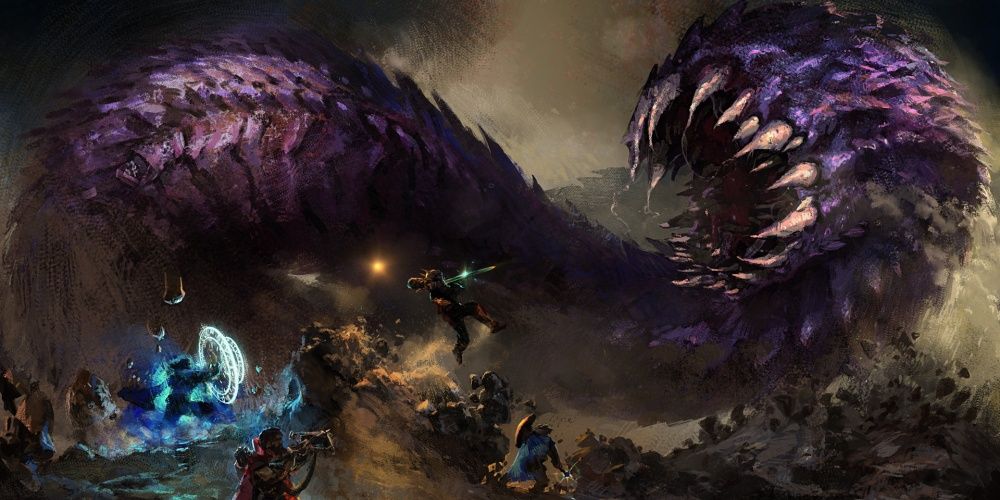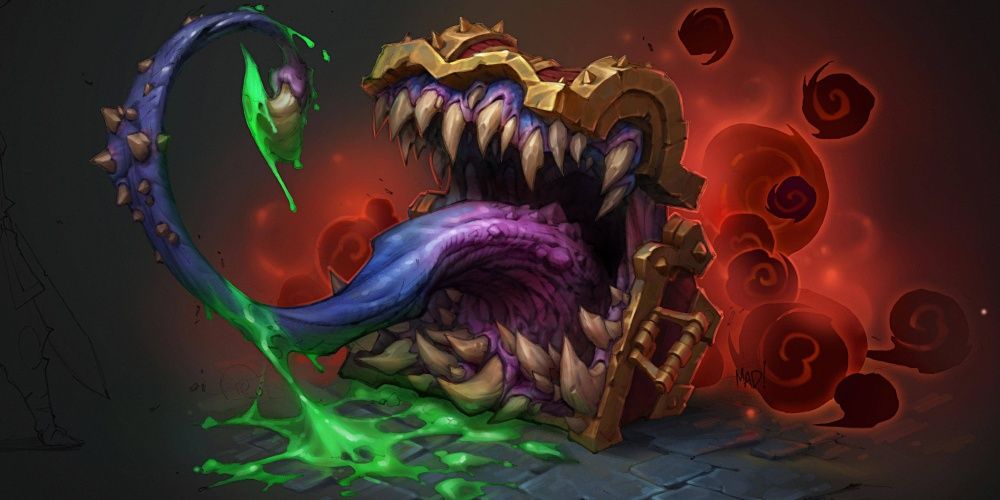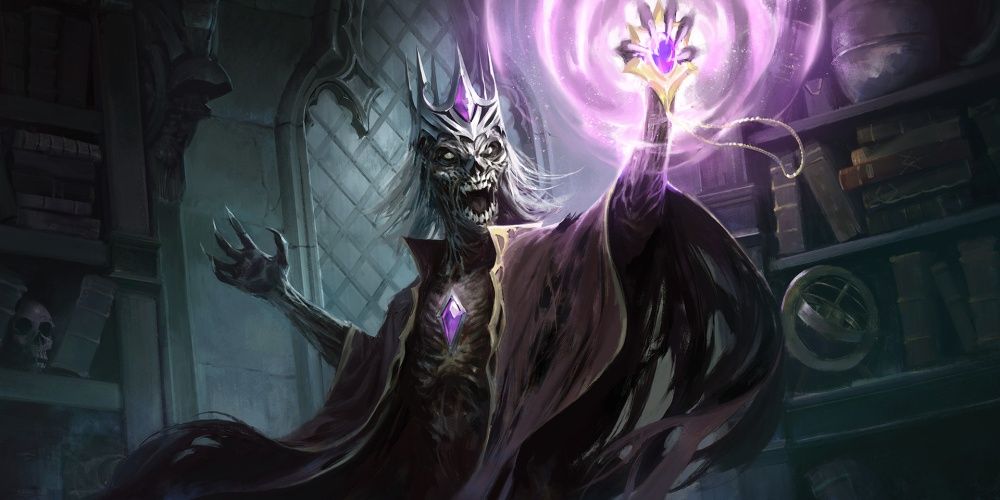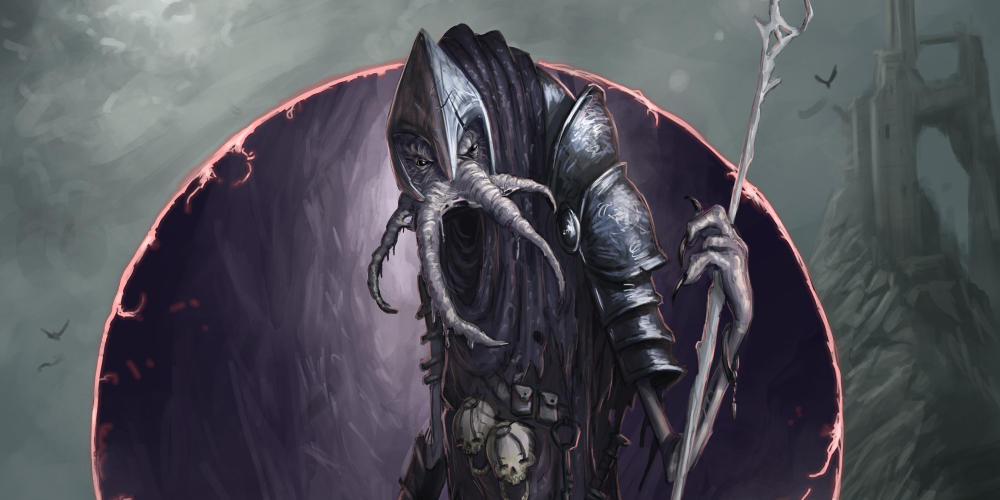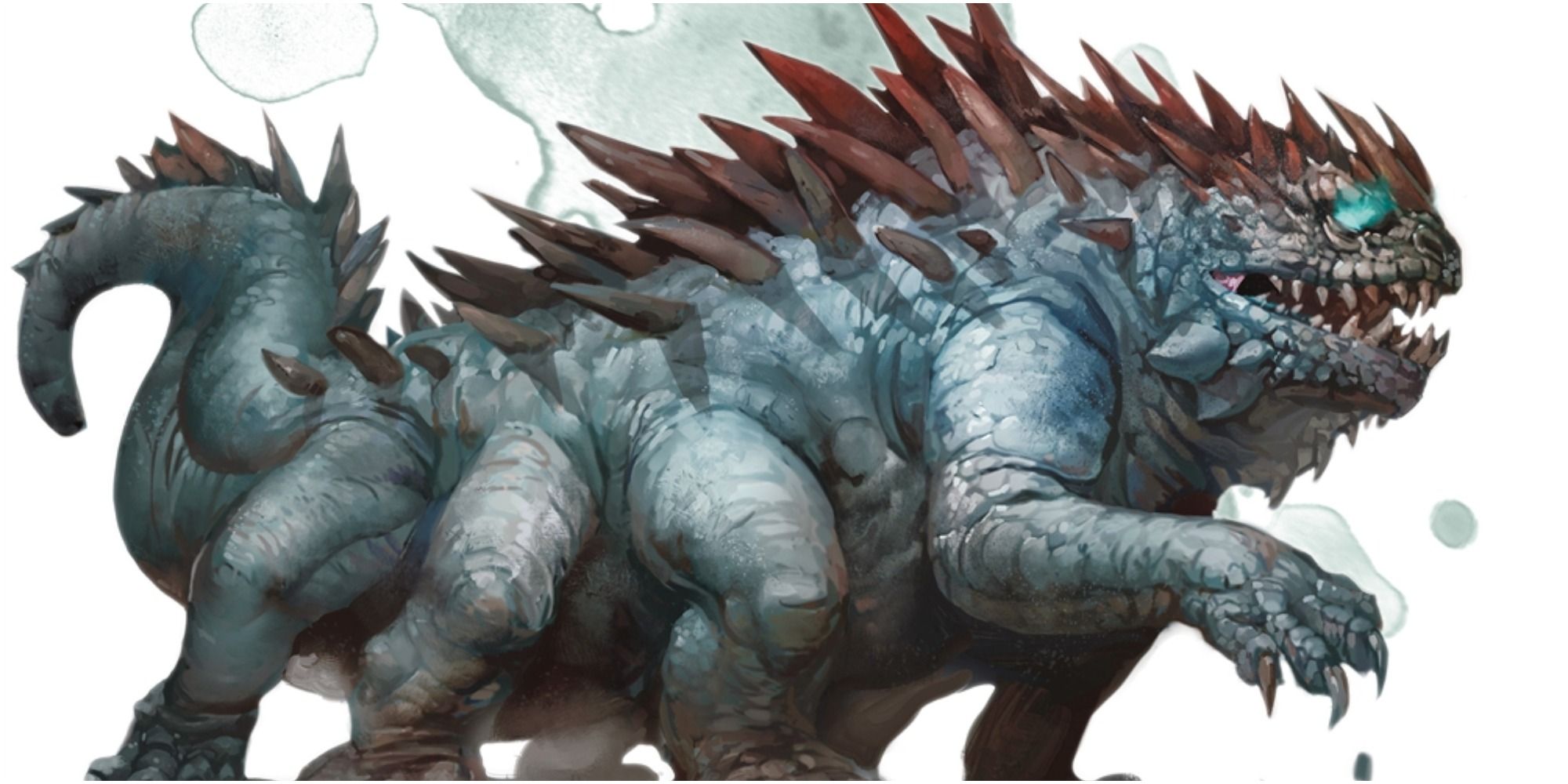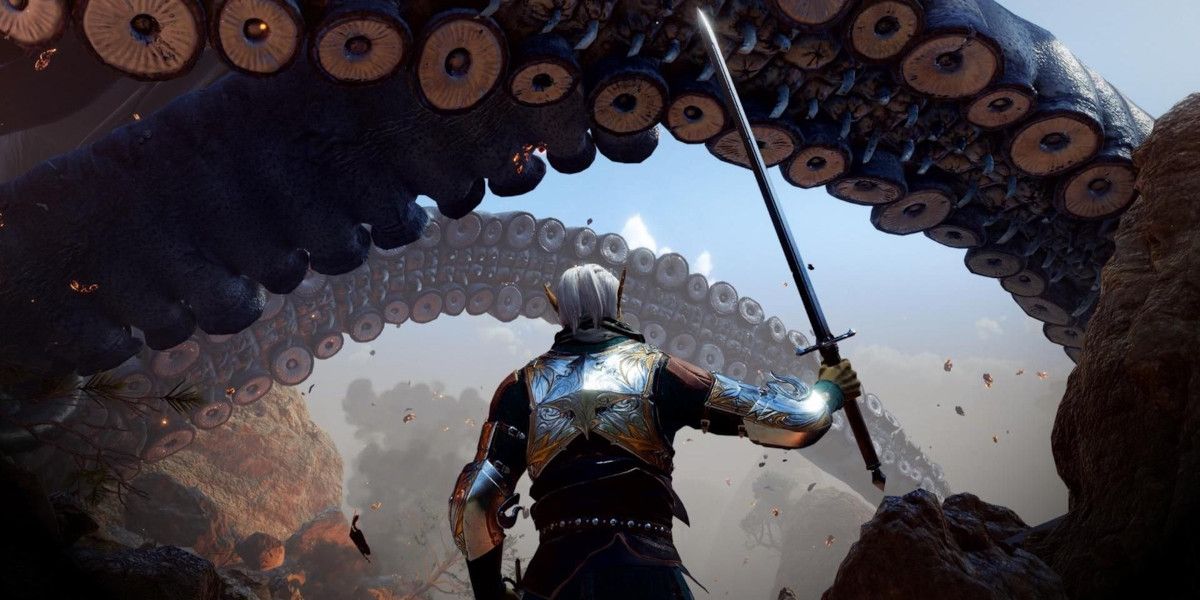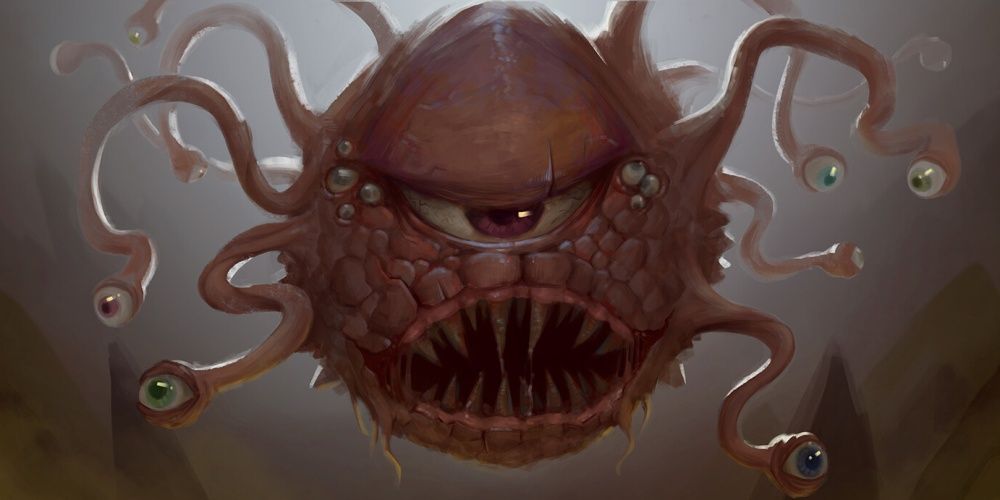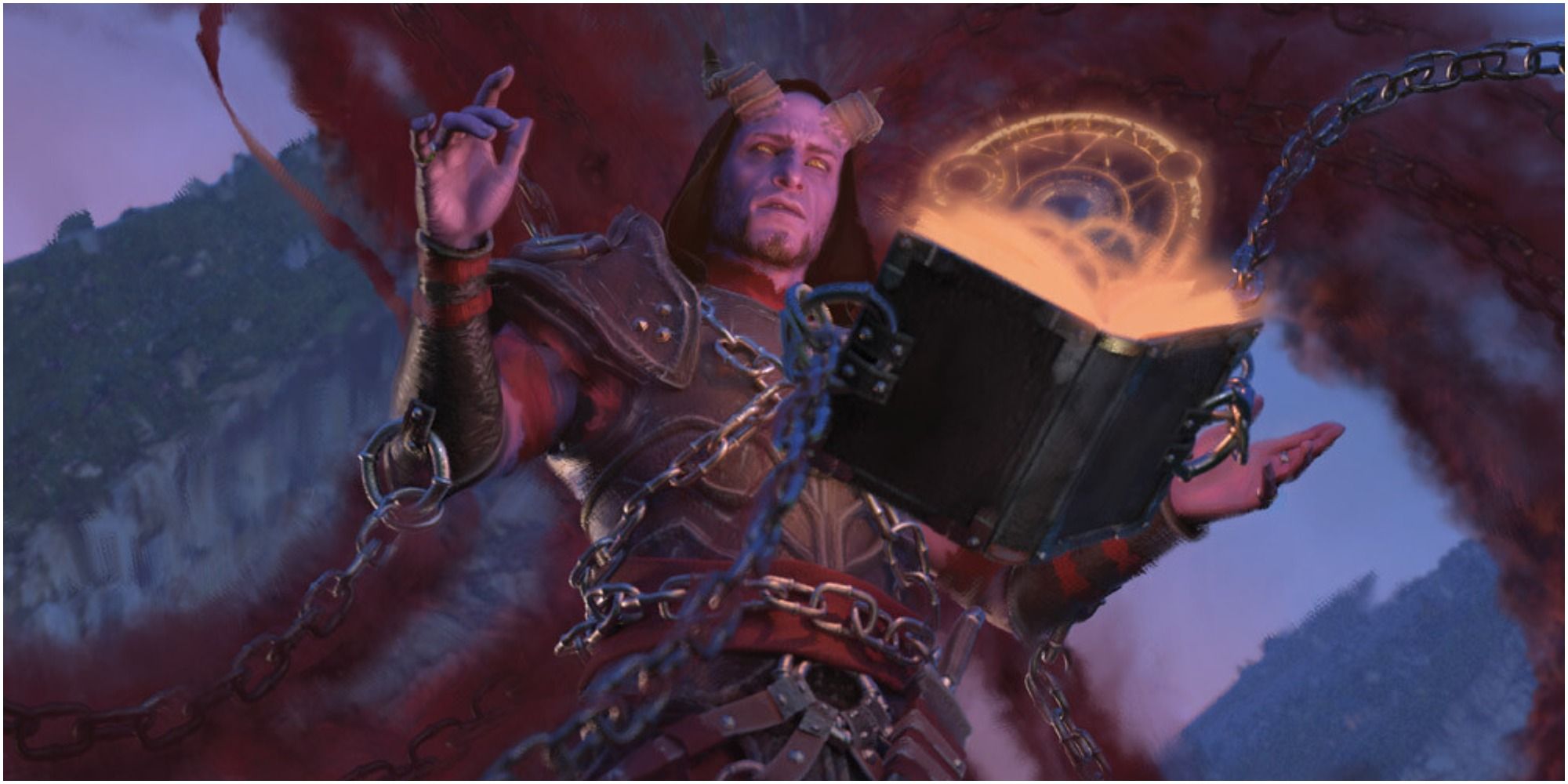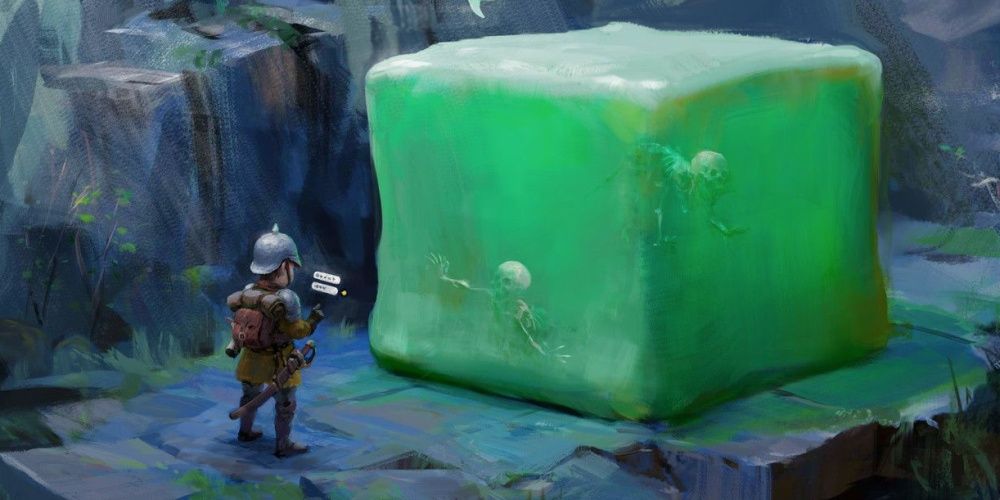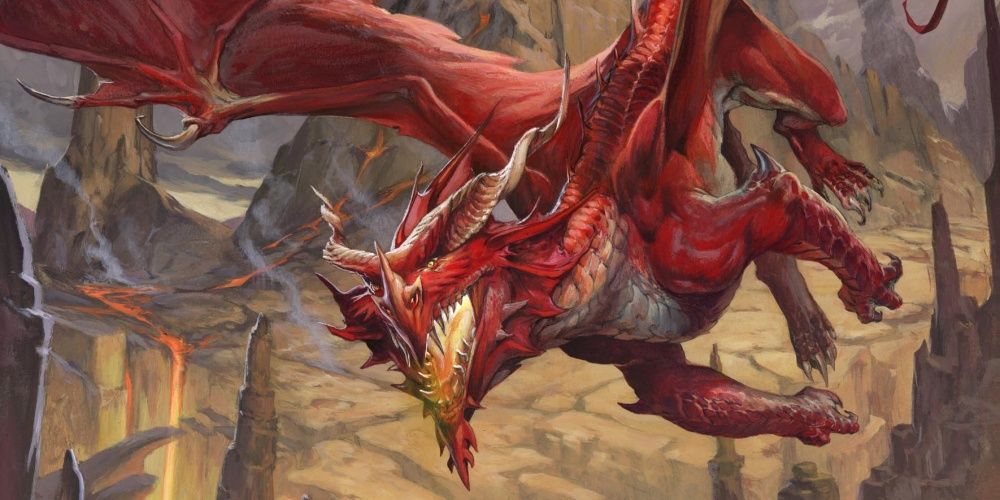As the name suggests, the worlds of Dungeons & Dragons are chock full of tantalizing, treacherous, and altogether terrible monsters. Over the game's 46 year run, some of the most iconic monsters spawned by the game's creators have proven more memorable than others. What exactly makes these monsters stick in the minds of players and dungeon masters alike?
Some are unforgettable thanks to the sheer terror they inspire, others due to their hilarity, and others due to their strangeness. Whatever the cause, these monsters are well known to any player who has spent a decent amount of time at the table, and for good reason.
Updated on December 19, 2021, by Kristy Ambrose: With all of the new information available to Dungeons & Dragons players, there are also several more iconic monsters we can add to our list. The concept of homebrew creations has also become more popular, so if a player or Dungeon Master is looking for a unique creature to surprise an unsuspecting party, there are a lot of exciting new dungeons and other dark places where they can look.
14 Kobolds
Kobolds are classic low-level party introductory enemies and are among some of the most famous D&D monsters. These small, scaled dragonkin are loosely related to dragons, but a dragon would never admit it. Kobolds are wimps as far as combat is concerned, making them easy prey out in the open.
However, enter a kobold lair, and players will soon discover that these creatures are craftier than the most eccentric of gnome tinkers. Kobolds are best known for their elaborate warrens filled with dangerous traps, including bone alarms, dart traps, pit traps, rolling boulders, bug swarm nests, and whatever else their devious little minds can think up.
13 Vampires
The Vampires of the Dungeons & Dragons universe have their own unique lore. Players can experience this through the official sourcebook, Van Richten's Guide to Ravenloft. They have all of the powers that players can expect, such as a wide variety of Charm and Enchantment spells, along with melee combat abilities like Bite, shapeshifting abilities, and heightened sensitivity to sunlight and running water.
It should be noted that Vampires in D&D adventures can venture outside during the day and aren't killed by sunlight, but only take more damage from it, and are only stunned with a wooden stake through the heart as opposed to killed by it.
12 Shambling Mounds
The shambling mound is a living mass of detritus, flowers, and other plant matter brought to life most often by an errant bolt of lightning. These large plant creatures lie in wait in bogs, swamps, and forests, patiently biding their time until a tasty snack wanders nearby. Shambling mounds consume everything they can and are the best D&D monsters for any module that involves plant life.
The tangle of stripped plants that makes up a shambling mound is so large that it can engulf a character entirely, pounding the poor soul around inside its body until he or she struggles no longer. The existence of shambling mounds makes players suspect of every bush or bramble a dungeon master might mention, and that alone is cause for celebration.
11 Owlbears
Owlbears are exactly what they sound like. Bears with the head of an owl. No wings though, thankfully. While they might appear cute at first sight, make no mistake. Owlbears are vicious predators. The features they gain from their owl head make them incredibly perceptive, so sneaking past one of these monsters in the wilderness is no easy task.
Woe to any who stumble upon a mother owlbear and her cub. These muscular matriarchs take no chances with the protection of their young and attack anything that they perceive as a possible threat.
10 Purple Worms
The purple worm is a gargantuan-sized iconic D&D monster reminiscent of the sandworms described in Frank Herbert's famous novel Dune. Purple worms burrow through the ground at a surprising pace, swallowing up anything unfortunate enough to stand in their way. The worms' Tremorsense allows them to pinpoint the location of anything touching the ground within 60 feet of them. In other words, if the earth ever starts to shake in a character's D&D game, an earthquake is the least of worries.
Besides the fear of being swallowed whole, adventurers should also beware of the purple worm's deadly tail stinger. Characters foolhardy enough to face down a purple worm and lucky enough to defeat it should always check the creature's stomach for a worthy reward: swallowed precious gems.
9 Mimics
The mimic is the bane of the standard adventurer and could be the most well-known and notorious of D&D monsters. These shape-changing monstrosities can take on the form of any medium-sized object. The most common form they take is that of an ornate treasure chest; the perfect lure for greedy treasure seekers.
A creature that touches a mimic immediately adheres to the sticky surface of its skin, at which point the trap is sprung. The mimic sheds its disguise, opening a maw of dagger-length teeth that chomp down on the unsuspecting victim. Bon appetit.
8 Liches
While the undead are often portrayed as mindless zombies solely interested in their next serving of brains, liches completely upend this depiction. A Lich is an undead creature that's impossibly smart, as only the most talented and ambitious of spellcasters are capable of discovering the secrets of Lichdom and unnaturally extending their life.
A Lich delays its death by feeding the souls of other humanoids to its phylactery: an item inscribed with arcane sigils that contain the Lich's own soul. The only way to truly kill these soulless, scheming skeletons is by destroying their phylactery. However, a lich always hides its phylactery in the most forlorn and hard to reach places.
7 Mind Flayers
Mind flayers are aberrations from beyond the stars inspired by Lovecraftian horror. These telepathic octopus people are some of D&D's most iconic monsters. They have the body of a human with the skin and head of an octopus. They are capable of psionic powers beyond the understanding of most mortals that allow them to control the minds of others.
Mind flayers live in colonies and expand their empires by using the bodies of other humanoids they encounter as hosts for the tadpole larva they spawn. That's a best-case scenario though, as mind flayers subsist on humanoid brains. The most likely outcome when encountering a mind flayer is that the monster soon makes a meal out of the pink, gooey stuff between a character's ears, devouring his or her memories, personality, and fears in a fit of euphoric feasting.
6 Basilisk
It's not enough that it's a massive, bad-tempered lizard with a crazy AC, but it also turns you to stone. This condition can be permanent and has led to the permanent deaths of many hapless characters.
The Basilisk appears in many locations that are equally iconic in D&D, like the Chamber of Secrets, and it often takes something more complex than brute force to defeat it. You can trick a Basilisk into looking into a reflective surface, and if bright light is used to confuse it, the monster thinks the reflection is a rival basilisk and sets its deadly gaze on itself.
5 Enormous Tentacle
It's a good thing this monster is situational and only appears under certain circumstances — because it's a deadly enemy. The details about this monster can be found in the supplemental resource, Aqusitions Inc., and although what it can do is very clear it's never explained whether or not these tentacles are attached to anything or where exactly they're coming from.
Despite all this, Enormous Tentacles seem to be sentient, have a heightened Perception ability, and possess a whopping 60 hit points. In an interesting twist, Druids of certain disciplines can shapeshift into an Enormous Tentacle form, but this might just be a homebrew idea.
4 Beholders
The beholder is the creature on the cover of the 5th edition Monster Manual, making it one of the most famous monsters in the D&D franchise. Like mind flayers, beholders are utterly alien beings. Unlike mind flayers, they don't get along with anyone, not even their own kind. Beholders are floating balls of flesh with a large eye in their center mass just above a maw of razor-sharp teeth. Extending out from their bodies like so many strands of hair are eleven stalks, each ending in a curious eye.
One might ask why such a creature needs so many eyes. The answer is so that it can shoot eleven different eye beams that do everything from petrifying to disintegrating a creature unlucky enough to cross the beholder's path. Beholders are solitary creatures, each one possessed by the belief that it is the apex of all evolution. A beholder is certain that no creature is more intelligent, powerful, or perfect than it. As a result, beholders see all other life forms as toys to play with and discard at their leisure.
3 Deathlock
The Undead are pretty much everywhere these days. As the name implies, this is the Warlock version, essentially a Warlock that's cursed with undeath for some reason. They are barely sentient, however, having little or no will of their own past fulfilling their master's desires.
The Deathlock has some of the powers they had as a living Warlock, and their specific abilities always depend on the patron they had. Some common abilities most Deathlocks have include Mage Armor, Invisibility, and Eldritch Blast. There are two types of Deathlocks; Masterminds and Wights. Masterminds have more spells than the average Deathlock, and Wights are able to drain power from living creatures to make them into zombie minions.
2 Gelatinous Cubes
The gelatinous cube is no different from a dinner serving of Jell-O. Well, no different besides the fact that it's a sentient, moving block of gelatin that turns the tables on who is eating whom. Gelatinous cubes aren't intelligent nor quick, but they are nearly imperceptible.
Gelatinous cubes usually acquire their meals as a result of brazen adventurers walking right into them and being subsequently digested. It's pretty funny to imagine a man-eating gelatin cube until the man the gelatin is eating ends up being your character. Thankfully, the presence of a gelatinous cube can be easily noted by an experienced adventurer. Gelatinous cubes leave the areas they move over completely spotless, which would be a very suspect feature of any dark, dank dungeon.
1 Dragons
Come on now. It's in the name of the game! Dragons may exist in all kinds of media, but none do them justice like Dungeons and Dragons. These dragons are highly intelligent creatures more akin to humanoids than monsters. They worship their own dragon gods, collect treasure like desperate adventurers, and plot to leave their mark on the history of the world.
Dragons in D&D come in many colors, but there are really only two larger camps. The Tiamat worshipping, evil-aligned chromatic dragons, and the good-aligned metallic dragons who serve Bahamut. Despite the fact that dragons are in the name of the game, many players will never actually encounter these creatures for one very good reason: they are so powerful that a fully grown one can easily TPK a party. Better get to killing more kobolds; any character is going to need a boatload of experience to hold a flame to D&D's namesake monster.

